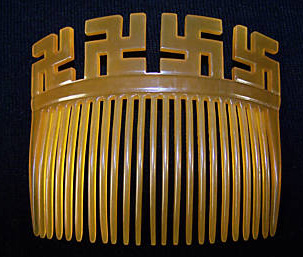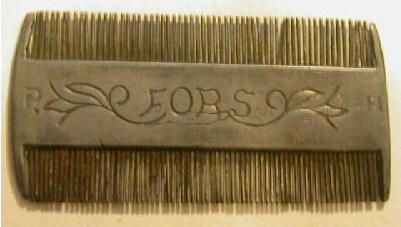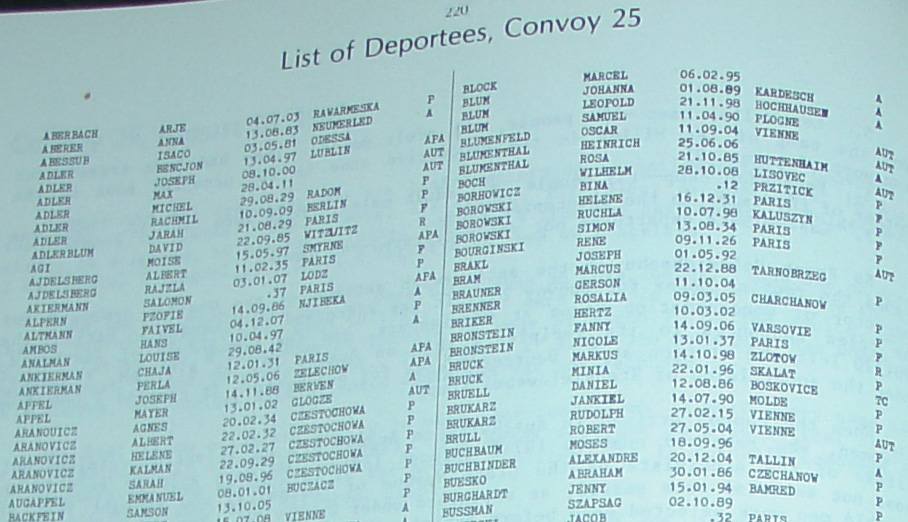“Ritual purification before God” defines Jewish burial. The liturgy and ceremony to prepare the body is called taharah, from the Hebrew verb taher, “be pure.” The Torah first mentions it in Genesis 35:2 – “Then Jacob said… Put away the strange gods that are among you, and be clean, and change your garments.”
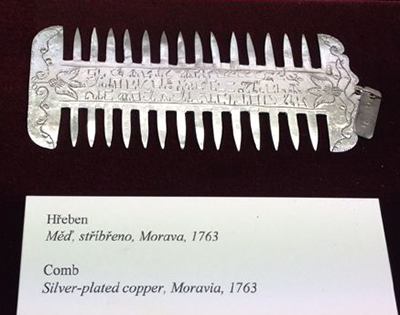
Photo: Jewish Museum of Prague.
Strict adherence to taharah is performed by burial societies called chevra kadisha. It is considered to be a great honor to do this and the last kindness, for you can never be thanked.
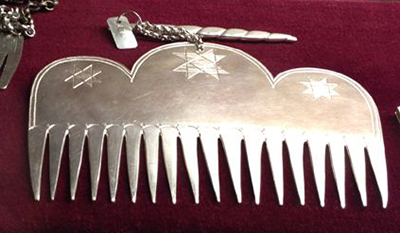
Photo: Jewish Museum of Prague.
The purification ritual has three parts: Washing the person, Showering the person, and Dressing the person. The comb plays an important role in the first and last parts.
The initial washing removes all artificial adornment. As this is done, fingernails are cut and the hair is combed. This explains why fingernail instruments are attached to the burial combs seen in the Jewish Museum of Prague.

Photo: Jewish Museum of Prague.
This rare brass comb with the Lion of Judah comes from The Creative Museum. Its inscription says, “A day of darkness, a day of mayhem comes upon us.”
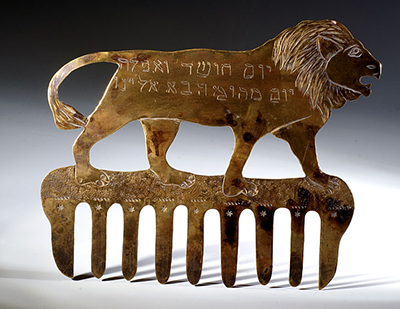
However, in other parts of the world, the burial comb can have hand-engraved floral ornaments, as in this Moroccan Jewish comb from the Kajetan Fiedorowicz collection
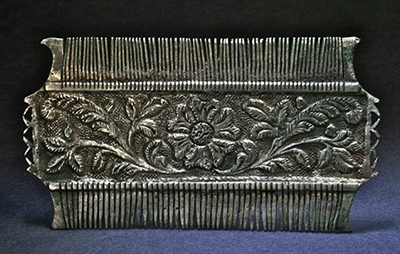
and this silver burial comb from the Sydney Jewish Museum.
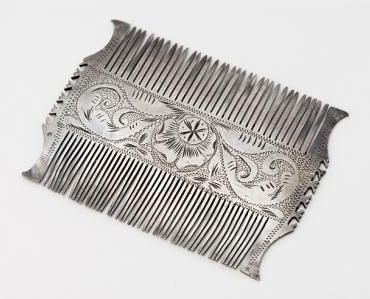
Or, the comb can just have text, such as this one from 15th Century Germany, which says, “This book was awarded to Yechezkel Rechkher of Brishköller. Laila Zecheneshel.”

Once the body is purified, the person is put in the coffin and dressed in tachrichim, white-cotton-shroud garments that symbolize the costume of Kohen Gadol, or High Priests during Israel’s First and Second Temple periods. The comb is used once again to set and dress the hair.
This piece is from the Michael Steinhart Judaica Collection. Breslau, 1868. Inscription: This is a gift of the treasured woman, madam Haya, daughter of the leader Tzvi, for use by the Hevra Kadisha.
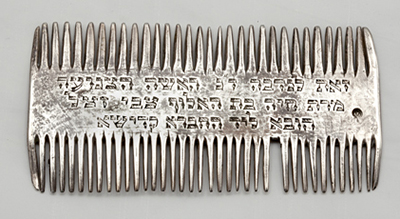
When the person is dressed, the casket is closed.
Rabbi Joseph B. Soloveitchik wrote, “Human death, however… terminates a personality which was driven by vision and hope, which despaired, rejoiced and grieved, which lived not only in the present moment but in both retrospection and anticipation. In a word, death destroys a world.”
מסרק
For more scholarly research, please examine
 Tachrichim Jewish Burial Shrouds |
 Kitzur Dinei Taharah |
 Jewish Museums of the World: Masterpieces of Judaica |

